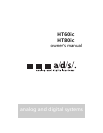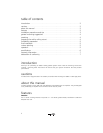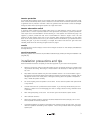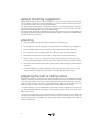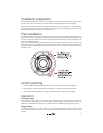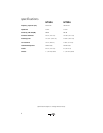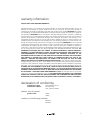
general mounting suggestions
Avoid placing the speaker within two feet (0.6 meters) of a corner. The acoustic reflections from surfaces
near the speakers can detract from the sound quality. Do not place the speaker behind heavy fabrics; if
you cannot see through a fabric, you cannot hear through it.
The ceiling speakers are designed for "infinite baffle" operation. The area behind the speaker installation
should be at least one-half cubic foot in volume to ensure proper performance. If the area is too small it
will limit bass response and cause a peak in the mid-bass range.
The panel on which the speaker is mounted must be rigid. There must not be any air leaks between the
area behind the speaker and the listening area.Mounting the speaker on a panel of a suspended ceiling
will adversely affect its performance.
prewiring
• Check local building and electrical codes for compliance of the speaker wire.
• Use stranded wire of at least 16 gauge; for runs over 100 feet, it is preferable to use 14 gauge wire.
• Use only insulated staples or nylon tie straps to secure wiring within the wall to avoid shorts.
• Do not stretch the wire as it is being routed. This could create future (and costly) problems.
• Leave about 2-3 feet of free wire at both ends. Cutting excess wire is better than splicing.
• Always "home run" wires: run a continuous wire from each speaker directly to the source location.
Do not connect speakers together any other way for easier diagnosis of faulty wire or speaker problems.
• Wire speakers in phase with the same polarity. Attach positive (+/red) and negative (-/black) terminals
consistently.
• Combined impedance for speakers connected to each channel must be at least 4 ohm. This is the
minimum impedance tolerated by most amplifiers. Check with your dealer before wiring.
preparing the wall or ceiling cutout
Confirm there is at least 1" between the final cutout and nearby studs or joints for positioning mounting
hardware. Temporarily fasten the stiff paper template (supplied) to the wall with thumbtacks. Carefully
trace around the perimeter with a pencil. Before making the final cutout of the entire hole, first make a
small 4-inch"test" cutout in the center of your penciled outline. Reach your hand inside to verify that
studs are outside the outline. This is an important step, since stud finders are not infallible.
To cut the actual hole, first score wallboard with a sharp knife; then use a keyhole saw to complete the
cut. Remove remaining debris from the edges. Hold the speaker up to the cutout to make sure it inserts
easily without forcing.
At this point, it is a good idea to secure the speaker wire to a stud near the cutout so its own weight will
not tug on the terminals of the speaker after it is connected. This will also prevent you from "losing" the
wire in the ceiling. Before attaching the wire, make sure the speaker wire runs through, not around, the
metal mounting bracket.
4



